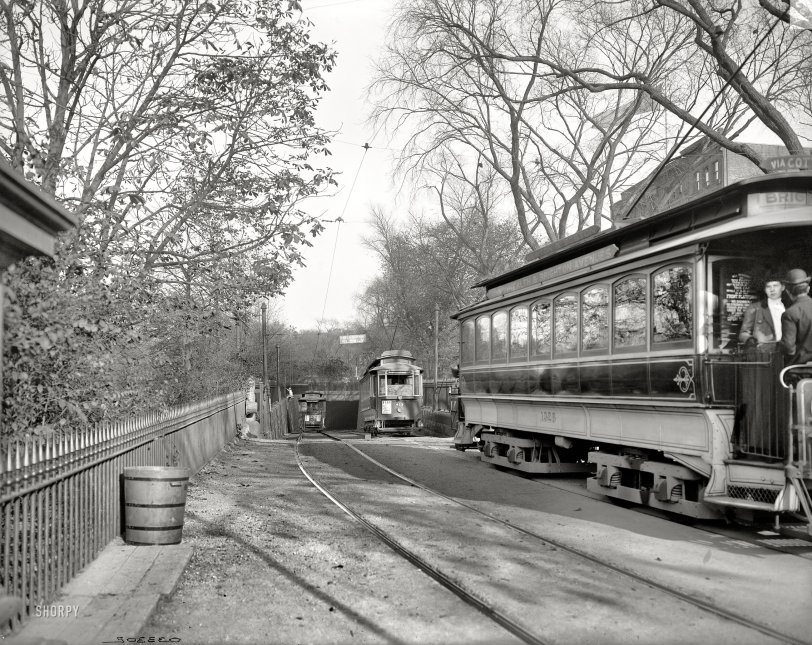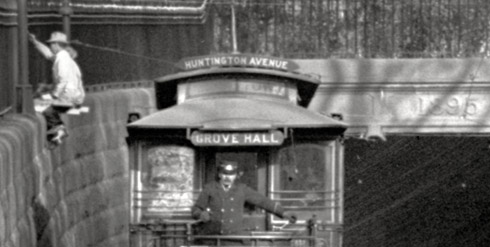


Framed or unframed, desk size to sofa size, printed by us in Arizona and Alabama since 2007. Explore now.
Shorpy is funded by you. Patreon contributors get an ad-free experience.
Learn more.

- Lost in Toyland
- And without gloves
- If I were a blindfolded time traveler
- Smoke Consumer Also Cooks
- Oh that stove!
- Possibly still there?
- What?!?
- $100 Reward
- Freeze Frame
- Texas Flyer wanted
- Just a Year Too Soon
- WWII -- Replacing men with women at the railroad crossing.
- Yes, Icing
- You kids drive me nuts!
- NOT An Easy Job
- I wonder
- Just add window boxes
- Icing Platform?
- Indiana Harbor Belt abides
- Freezing haze
- Corrections (for those who care)
- C&NW at Nelson
- Fallen Flags
- A dangerous job made worse
- Water Stop
- Passenger trains have right of way over freights?
- Coal
- Never ceases to amaze me.
- Still chuggin' (in model form)
- Great shot
Print Emporium
Enter Subway Slowly: 1904

Boston, Massachusetts, circa 1904. "Descent into subway, Public Garden." 8x10 inch dry plate glass negative, Detroit Publishing Company. View full size.
Green Line
I used to take the T Green Line every day. I called it "The Nausea Express" ........for the way the train would speed-up slow down, speed-up slow-down.
Basically, for those unfamiliar with Boston and the Green Line; imagine stuffing yourself into a tiny little subway car with a couple hundred of your closest friends and very little seating (with everyone standing about one nanometer apart), add a whole lot of funky smells and the high-pitched ear-piercing screech of grinding metal, shake and stir it all together (speed-up, slow-down), and you've got the Boston T's Green Line.
Anyway. I loved living in Boston. It's a great place. I miss it - even the Green Line.
Clews
A clue as to the date: The Helping Hand Society's fair at the Park Street Vestry on October 20, 21, 22. Amateur archivist alert!

The "wicker basket"
It's a wooden bucket that most likely contained sand for traction on wet or snowy days so the trolleys could climb up grade and also for assisting in braking.
[Interesting, but the basket is behind the bucket. - Dave]

A tisket, a tasket
What is the purpose of the wicker basket?
The old A Line
The car on the far right in the foreground is heading toward Park Street on what would become the old A branch of the Green Line. Current Boston commuters know the four lettered Green Line branches (B, C, D, and E), but until the early 70s the A branch ran with the B until splitting off at Comm Ave and Brighton Ave and then running through Oak Square, Newton Corner, and ending at Watertown Square.
Subwayspotting
This entrance was only used for a short period and was sealed in 1914. You can still see the ramp from underground when traveling between Boylston and Arlington stops.
There used to be a great site about the MTA/MBTA's history, including abandoned stations and entrances; it's apparently disappeared but is preserved by the Wayback Machine. If you're a trainspotter like me you'll love it.
[Below, the tunnel marked with the year 1895. - Dave]

























On Shorpy:
Today’s Top 5